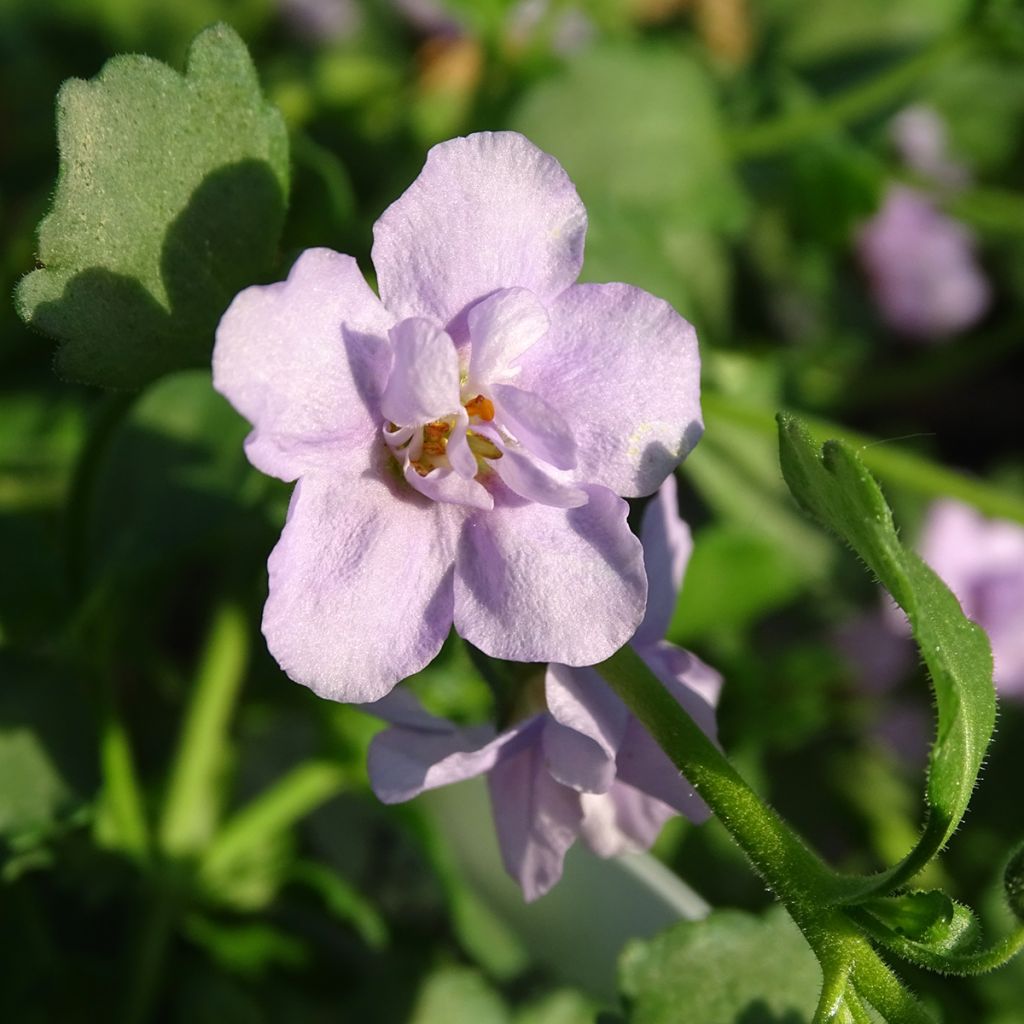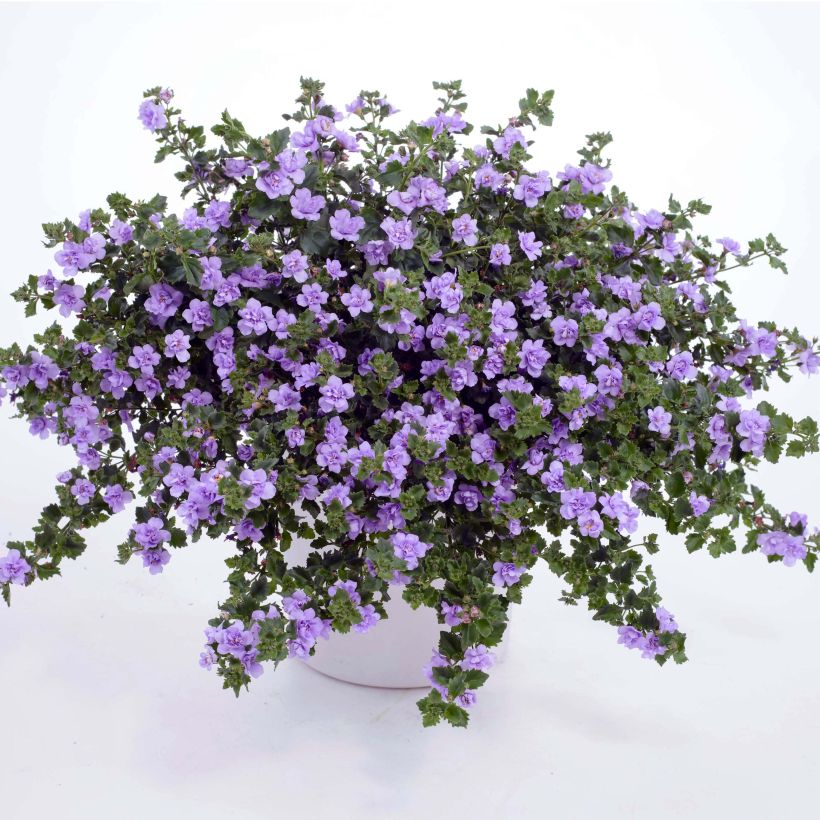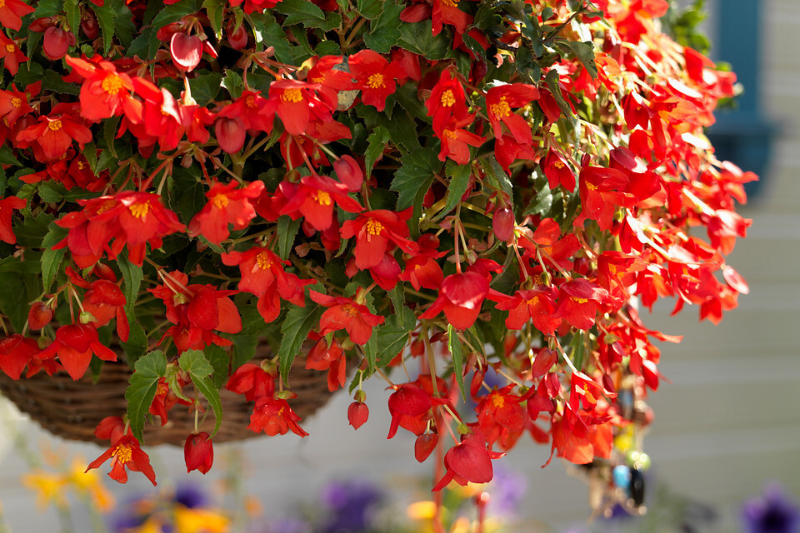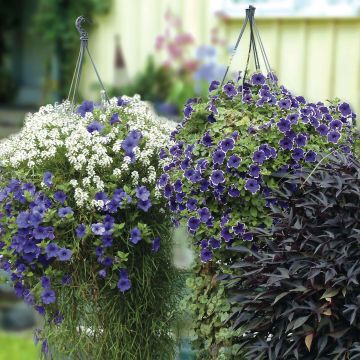

Bacopa Scopia Double Lavender


Bacopa Scopia Double Lavender
Bacopa Scopia Double Lavender
Sutera cordata Scopia® Double Lavender
Bacopa
Not much flowering, this bacopa remained puny. Too bad, the flowers are pretty.
Sylvie, 20/10/2024
Special offer!
Receive a €20 voucher for any order over €90 (excluding delivery costs, credit notes, and plastic-free options)!
1- Add your favorite plants to your cart.
2- Once you have reached €90, confirm your order (you can even choose the delivery date!).
3- As soon as your order is shipped, you will receive an email containing your voucher code, valid for 3 months (90 days).
Your voucher is unique and can only be used once, for any order with a minimum value of €20, excluding delivery costs.
Can be combined with other current offers, non-divisible and non-refundable.
Home or relay delivery (depending on size and destination)
Schedule delivery date,
and select date in basket
This plant carries a 6 months recovery warranty
More information
We guarantee the quality of our plants for a full growing cycle, and will replace at our expense any plant that fails to recover under normal climatic and planting conditions.

Would this plant suit my garden?
Set up your Plantfit profile →
Description
The Bacopa 'Scopia Double Lavender' is a very recent selection of Sutera that forms a remarkable cushion with a semi-trailing habit, dense foliage, scattered with large double flowers for a bacopa, of a soft and luminous lavender blue. This plant, suitable for mild climates, grown as an annual, blooms long and abundantly, from May-June to October. It allows for quickly and charmingly filling hanging baskets and balconies, alone or in combination with other varieties as well as with all terrace plants. The Bacopa 'Scopia' is also suitable for creating delightful flower borders.
Bacopas are perennial plants or frost-tender shrubs of the Scrophulariaceae family, originating from South Africa. The Scopia ® 'Double Lavender' selection develops slightly woody stems that spread all around the base, quickly forming a spread-out, rounded and very bushy plant, about 25-30 cm (9.8 - 11.8 in) in height by 35-40 cm (13.8 - 15.7 in) in width. They are adorned with small green and velvety heart-shaped leaves, about 1.5 cm (0.4 in) long, with toothed edges. The stems are covered with bouquets of double flowers, 3 cm (1.2 in) in diameter, generously scattered along their entire length, originating from the axils of the leaves. The flowers of the 'Scopia Double Lavender' variety are well open towards the sky and truly luminous, ranging from blue-mauve to almost white. They have a tubular base and spread out in double corollas, almost completely concealing a small cream-yellow heart.
Thanks to their silhouette, bacopas easily blend with all balcony and hanging basket plants. They can be paired, for example, with taller flowers such as dwarf roses, pennisetums or pelargoniums, double impatiens, but are just as effective grouped together or even used as ephemeral ground cover in flower beds. The 'Double Lavender' Bacopa is perfect for brightening up a windowsill or the base of a partially sun-exposed wall. It will accompany all pastel-toned flowers and temper the vibrant colours of trailing surfinias and fuchsias.
Note: Please be aware that our young plants in mini-plugs are professional products intended for experienced gardeners: upon receipt, transplant and store them in a sheltered place (veranda, greenhouse, cold frame...) at a temperature above 14C° for a few weeks before being planted outdoors once all risk of frost has passed.
Bacopa Scopia Double Lavender in pictures




Flowering
Foliage
Plant habit
Botanical data
Sutera
cordata
Scopia® Double Lavender
Scrophulariaceae
Bacopa
Cultivar or hybrid
Planting and care
Plant your bacopas in a sunny location or possibly in partial shade in very hot regions. These plants need a light and humus-rich soil and appreciate a fertiliser supply. They tolerate a periodically dry soil quite well, but regular watering is essential to support flowering in the ground as well as in pots. You can plant your bacopas in a pot where they need to be watered more regularly and fed with a fertiliser for flowering plants. Be careful not to let water stagnate in a saucer, as bacopa roots dislike excessive moisture. Usually grown as annuals, they are actually fragile perennials: by bringing them indoors at the first frost, you can extend their flowering period during autumn and winter. Outdoor cultivation is possible by the seaside, with good mulching in winter. Plan for light pruning in March. To further branch out the bacopas, you can pinch the tips of the stems to encourage them to divide.
Planting period
Intended location
Care
Planting & care advice
-
, onOrder confirmed
Reply from on Promesse de fleurs
Similar products
Haven't found what you were looking for?
Hardiness is the lowest winter temperature a plant can endure without suffering serious damage or even dying. However, hardiness is affected by location (a sheltered area, such as a patio), protection (winter cover) and soil type (hardiness is improved by well-drained soil).

Photo Sharing Terms & Conditions
In order to encourage gardeners to interact and share their experiences, Promesse de fleurs offers various media enabling content to be uploaded onto its Site - in particular via the ‘Photo sharing’ module.
The User agrees to refrain from:
- Posting any content that is illegal, prejudicial, insulting, racist, inciteful to hatred, revisionist, contrary to public decency, that infringes on privacy or on the privacy rights of third parties, in particular the publicity rights of persons and goods, intellectual property rights, or the right to privacy.
- Submitting content on behalf of a third party;
- Impersonate the identity of a third party and/or publish any personal information about a third party;
In general, the User undertakes to refrain from any unethical behaviour.
All Content (in particular text, comments, files, images, photos, videos, creative works, etc.), which may be subject to property or intellectual property rights, image or other private rights, shall remain the property of the User, subject to the limited rights granted by the terms of the licence granted by Promesse de fleurs as stated below. Users are at liberty to publish or not to publish such Content on the Site, notably via the ‘Photo Sharing’ facility, and accept that this Content shall be made public and freely accessible, notably on the Internet.
Users further acknowledge, undertake to have ,and guarantee that they hold all necessary rights and permissions to publish such material on the Site, in particular with regard to the legislation in force pertaining to any privacy, property, intellectual property, image, or contractual rights, or rights of any other nature. By publishing such Content on the Site, Users acknowledge accepting full liability as publishers of the Content within the meaning of the law, and grant Promesse de fleurs, free of charge, an inclusive, worldwide licence for the said Content for the entire duration of its publication, including all reproduction, representation, up/downloading, displaying, performing, transmission, and storage rights.
Users also grant permission for their name to be linked to the Content and accept that this link may not always be made available.
By engaging in posting material, Users consent to their Content becoming automatically accessible on the Internet, in particular on other sites and/or blogs and/or web pages of the Promesse de fleurs site, including in particular social pages and the Promesse de fleurs catalogue.
Users may secure the removal of entrusted content free of charge by issuing a simple request via our contact form.
The flowering period indicated on our website applies to countries and regions located in USDA zone 8 (France, the United Kingdom, Ireland, the Netherlands, etc.)
It will vary according to where you live:
- In zones 9 to 10 (Italy, Spain, Greece, etc.), flowering will occur about 2 to 4 weeks earlier.
- In zones 6 to 7 (Germany, Poland, Slovenia, and lower mountainous regions), flowering will be delayed by 2 to 3 weeks.
- In zone 5 (Central Europe, Scandinavia), blooming will be delayed by 3 to 5 weeks.
In temperate climates, pruning of spring-flowering shrubs (forsythia, spireas, etc.) should be done just after flowering.
Pruning of summer-flowering shrubs (Indian Lilac, Perovskia, etc.) can be done in winter or spring.
In cold regions as well as with frost-sensitive plants, avoid pruning too early when severe frosts may still occur.
The planting period indicated on our website applies to countries and regions located in USDA zone 8 (France, United Kingdom, Ireland, Netherlands).
It will vary according to where you live:
- In Mediterranean zones (Marseille, Madrid, Milan, etc.), autumn and winter are the best planting periods.
- In continental zones (Strasbourg, Munich, Vienna, etc.), delay planting by 2 to 3 weeks in spring and bring it forward by 2 to 4 weeks in autumn.
- In mountainous regions (the Alps, Pyrenees, Carpathians, etc.), it is best to plant in late spring (May-June) or late summer (August-September).
The harvesting period indicated on our website applies to countries and regions in USDA zone 8 (France, England, Ireland, the Netherlands).
In colder areas (Scandinavia, Poland, Austria...) fruit and vegetable harvests are likely to be delayed by 3-4 weeks.
In warmer areas (Italy, Spain, Greece, etc.), harvesting will probably take place earlier, depending on weather conditions.
The sowing periods indicated on our website apply to countries and regions within USDA Zone 8 (France, UK, Ireland, Netherlands).
In colder areas (Scandinavia, Poland, Austria...), delay any outdoor sowing by 3-4 weeks, or sow under glass.
In warmer climes (Italy, Spain, Greece, etc.), bring outdoor sowing forward by a few weeks.


















































